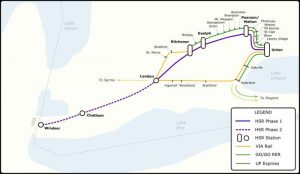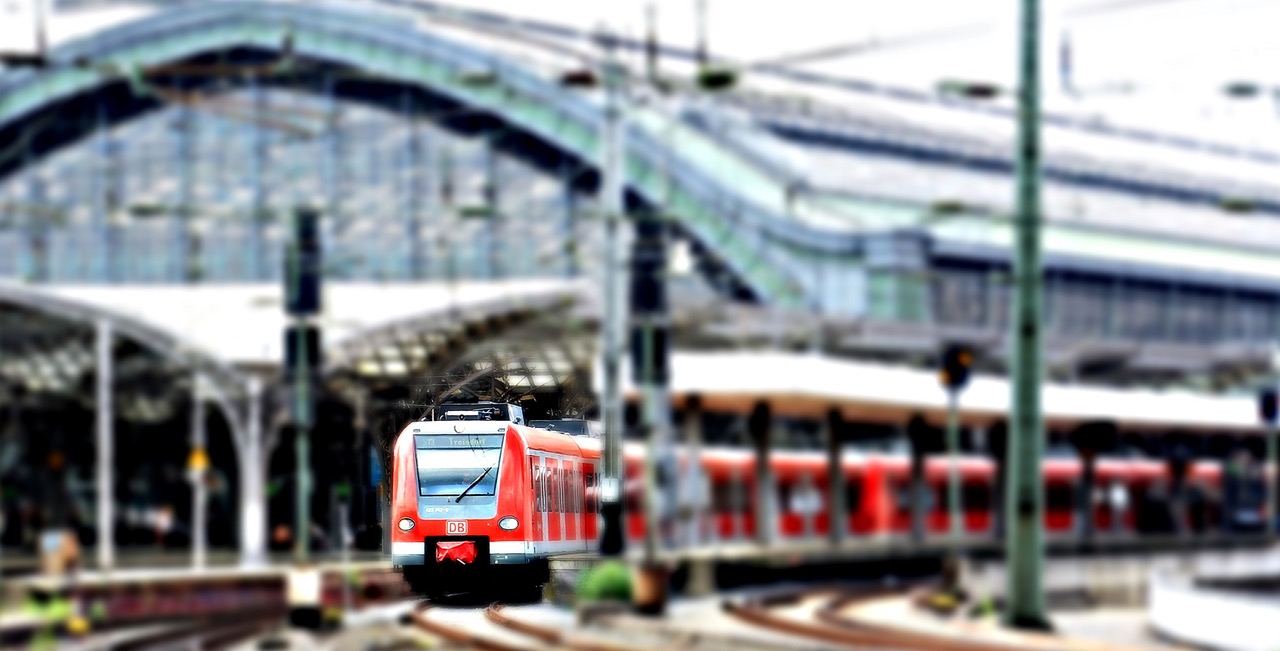This week: major announcements from the province, including the Ontario Municipal Board, intensification, and high speed rail.
Subscribe to get weekly updated delivered directly to your inbox!
Consultations, feedback, and events
- ONTARIO CYCLING: Identifying a province-wide network, due May 26
- BIKEFEST: May 28, Carl Zehr Square
- TRAILS:
- Iron Horse Trail to transit hub connection
- Spur Line Trail crossing at Union, comments due May 25
- ZONING: Waterloo draft zoning bylaw, comments due July 1
- KITCHENER: Shape Downtown Kitchener
- CAMBRIDGE: Transportation Master Plan
- TRANSIT: New Directions 2017-2021 Grand River Transit plan
- REGION: Trade-offs in transportation
High speed rail
 On Friday, the Premier announced that the province would be beginning an environmental assessment (EA) to build high speed rail on the Toronto-Windsor corridor, beginning with London, Kitchener, Guelph, and Toronto, for which service is projected to open by 2025. The announcement was accompanied by the release of a business case and special advisor’s report, which includes recommendations for improving intercity transit links and integration with local transit for communities surrounding the corridor.
On Friday, the Premier announced that the province would be beginning an environmental assessment (EA) to build high speed rail on the Toronto-Windsor corridor, beginning with London, Kitchener, Guelph, and Toronto, for which service is projected to open by 2025. The announcement was accompanied by the release of a business case and special advisor’s report, which includes recommendations for improving intercity transit links and integration with local transit for communities surrounding the corridor.
- The route would serve the multi-modal transit hub in Kitchener.
- The report recommends peak speeds of 250 km/h at an estimated cost of $8 billion for the Toronto-London phase, instead of considerably more expensive 300 km/h trains.
- Travel times from Kitchener are projected to be 25 minutes to London, 9 minutes to Guelph, 32 minutes to Pearson Airport/Malton, and 48 minutes to Union Station.
- Three high-speed trains would serve Kitchener-Toronto each hour at peak times, with two off-peak. One GO regional express rail train (which would also serve smaller communities and stops in Brampton) would run hourly.
- High speed rail would replace VIA service between Kitchener and Toronto.
- Fares from Kitchener to other destinations in the first phase could range from $15-30.
- The EA is expected to take 4 years to complete both provincial and federal approvals. Design may be conducted concurrently to expedite construction.
Additional reads:
- 12 things to know about Ontario’s high speed rail proposal (CTV Kitchener)
- Responses from Kitchener-Conestoga MPP Michael Harris and Kitchener-Waterloo MPP Catherine Fife
- High speed rail in Ontario, finally? Not so fast (CBC)
Land use
As anticipated last week, the province announced reforms to the Ontario Municipal Board (OMB), which hears appeals of land use decisions. The changes would allow municipalities to opt to exempt approvals of properties in major transit station areas from appeals, and would replace the OMB with a more limited Local Planning Appeal Tribunal, which wouldn’t be allowed to upend growth management strategies like it did in Waterloo Region.
On Thursday, the province also released an updated Growth Plan for the Greater Golden Horseshoe. Under this plan, municipalities are required to adopt a complete streets approach when building or reconstructing roads, and minimum density targets of 160 residents and jobs per hectare would be required in light rail station areas. (That’s somewhere between the densities of Downtown Kitchener and Uptown Waterloo.)
In Kitchener, proposed station area plans for Midtown and Rockway areas were presented at a public consultation. Stay tuned at the Kitchener PARTS website for details of the plans and opportunities for feedback.
- How Ontario Municipal Board reform could benefit Waterloo Region (Waterloo Chronicle)
- Ontario sets tougher anti-sprawl targets (The Record)
- The government has unveiled new development rules for southern Ontario. But will it enforce them? (TVO)
- Kitchener’s King Street project would create an ‘urban village’ with condos, shops, offices (The Record)
Vision Zero
Waterloo looks to improve the crossing of the Spur Line Trail at Union Street. The spot was recently studied by elementary school students who counted crossings and measured the speeds of passing vehicles, concluding that this intersection isn’t safe. Fixing it will be a difficult challenge, with nearby traffic lights and train tracks, so good public feedback is needed to ensure staff find the best solution.
Kitchener investigates broadening its traffic calming program to allow groups of neighbourhood residents to come up with and implement solutions for their streets.
- Analyzing bike collisions doesn’t tell the whole story (Next City)
- A data-driven crash prediction tool every city can use (CityLab)
- Should all pedestrians be clad in lime green? (Treehugger)
- The Trans Canada Trail has become a dangerous hoax (Dandyhorse)
Cycling
Kitchener gears up for BikeFest on May 28. Meanwhile, staff are proposing ‘advisory bike lanes’ for narrower portions of Krug, where two lanes of traffic and bike lanes won’t fit. The lanes would encourage cars to use the centre of the road until approaching oncoming vehicles, at which point they would be allowed to encroach on the bike lanes to pass, provided they yield to people cycling. For details, or to send feedback, contact Danny Pimentel.
- Low-stress streets mean more biking, greater transit access (Mobility Lab)
- No, protected bike lanes do not need to cost $1 million per mile (People for Bikes)
- New bike sharing service launching in Toronto (BlogTO)
- Apparently, US cities might just toilet plunge their way to bike safety (Next City)
Transit
Grand River Transit is adding traffic signal priority units to all of its buses, which will allow more of its fleet to be used on the iXpress 200 route when necessary. The system can make a traffic light change faster or stay green a little longer if a bus falls behind its schedule. Regional councillors have agreed with staff’s assessment that public washrooms at transit terminals beyond Charles and Ainslie would be too expensive to build, maintain, and keep safe.
- Where’s the bus driver? Driverless buses get a test drive in Montreal (CBC)
- Toronto: defending transit’s right to move (Human Transit)
- Public transit: building healthier communities (CUTA)
- A Canadian town wanted a transit system. It hired Uber (NY Times)
- Don’t judge transit by the gridlock on nearby roads (Streetsblog)

